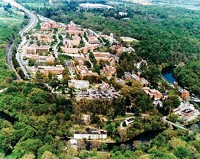Advertisement
Grab your lab coat. Let's get started
Welcome!
Welcome!
Create an account below to get 6 C&EN articles per month, receive newsletters and more - all free.
It seems this is your first time logging in online. Please enter the following information to continue.
As an ACS member you automatically get access to this site. All we need is few more details to create your reading experience.
Not you? Sign in with a different account.
Not you? Sign in with a different account.
ERROR 1
ERROR 1
ERROR 2
ERROR 2
ERROR 2
ERROR 2
ERROR 2
Password and Confirm password must match.
If you have an ACS member number, please enter it here so we can link this account to your membership. (optional)
ERROR 2
ACS values your privacy. By submitting your information, you are gaining access to C&EN and subscribing to our weekly newsletter. We use the information you provide to make your reading experience better, and we will never sell your data to third party members.
Finance
Why DuPont Shrunk Its Central Research Unit
Experts see the cuts to the illustrious unit as part of a trend that puts business first
by Alexander H. Tullo
January 21, 2016
| A version of this story appeared in
Volume 94, Issue 4
Less than a week after DuPont announced its merger with Dow Chemical on Dec. 11, DuPont managers told scientists at DuPont Central Research & Development in Wilmington, Del., to halt all laboratory work. The researchers were to label unmarked samples and leave everything else in place. Severe and unprecedented cuts, the researchers were warned, were coming.
Between Christmas and New Year’s Day, employees received Microsoft Outlook invitations for 10-minute meetings with their supervisors. On Jan. 4, they took their turns learning if they would be let go. Cardboard file boxes were left in the lobbies at DuPont’s Experimental Station for workers to carry out their personal effects. Delaware state troopers were on-site in case of incident.

“It was one by one all day long,” a former researcher who asked not to be named tells C&EN. “And it was one of the most miserable days I ever had.”
The layoffs were part of a DuPont plan to roll up its storied Central R&D (CR&D) organization and fold it into a new group called Science & Innovation. The move was part of a larger program at DuPont meant to save $700 million annually, cut 10% of its workforce, and prepare the company for the merger with Dow.
DuPont was vilified by many in the chemistry community for the maneuver, which was seen as a capitulation to Wall Street’s lust for short-term profits and a triumph of the suits over the lab coats. DuPont, many said, was eating the seed corn that would lead to tomorrow’s breakthrough products.
“Kevlar, to my understanding, took 20 years to get from the red to the black,” says Andrew Feiring, a chemist who was with CR&D from 1974 to 2006. “Wall Street just isn’t going to stand for that sort of thing today.”
The demise of CR&D may have been abrupt, but an astute company watcher might have seen it coming. Over the past two decades, CR&D has been evolving away from the exploratory research for which it is best known and toward science that addresses perceived needs of businesses such as electronic materials and industrial biotechnology.
DuPont will retain a centralized R&D function, but not one like it had before. According to data obtained by C&EN but not confirmed by DuPont, the number of employees devoted to centralized research is now a small fraction of what it was only a year ago.
Two component organizations within CR&D, Molecular Sciences & Engineering and Materials Sciences & Engineering, saw 173 of their staff laid off. Another 63 employees are transferring to other DuPont business units. Thirty-four, among them 17 Ph.D.s, remain in the new Science & Innovation group. Before a previous round of layoffs last summer, the two organizations had 330 employees.

a Number of chemistry-related articles published in academic journals for which a DuPont employee is the first author.
b Patent information is likely incomplete for 2014 and 2015 because some patent applications may not have been made public by the U.S. Patent & Trademark Office.
SOURCE: Chemical Abstracts Service
Another CR&D affiliate, the Corporate Center for Analytical Sciences, has had its staff cut from 102 to 50 people. An unknown number of layoffs hit DuPont Engineering Technologies as well as Biochemical Sciences & Engineering, a former CR&D unit that is now part of the Industrial Biosciences business.
DuPont’s chief Science & technology officer, Doug Muzyka, acknowledges the reorganization was meant to save money and boost returns on R&D spending. “We are taking our costs down to align with what we think is affordable in the current business environment that we are facing and the challenges we have,” he says. “It is not what you spend. It’s what you get for what you spend.”
Science & Innovation, Muzyka says, is the next step in the evolution of DuPont R&D toward greater alignment with the business units. Even before the cuts, he notes, the business unit represented about 90% of DuPont’s $2.1 billion annual R&D budget.
The new organization, Muzyka says, will serve as a clearinghouse for ideas that originate from both inside the company and outside research partners. These projects will get handed off to the business units. For example, Science & Innovation will cultivate the technology of microbial genome specialist Taxon Biosciences, which DuPont purchased last year.
Furthermore, R&D staffing will be more fluid than it had been in the past, Muzyka says. Researchers will drift from Science & Innovation to the businesses and from the businesses back to Science & Innovation as they follow research projects.
The model is different from the science power center DuPont housed in its heyday. But although centralized research at the firm is much smaller, it is the culmination of a trend that has been building for years.
CR&D’s origins can be traced back to 1903, when Francis I. du Pont founded the Experimental Station in Wilmington for research into manufacturing explosives. In the 1920s, Charles M. A. Stine was given a budget of $300,000 to pursue pure research. He brought nylon inventor Wallace Carothers to the Experimental Station from Harvard University.
DuPont formally established the modern CR&D in 1957. For the next 40 years, it would function not only as a strong corporate research arm but also as a group on par with the world’s leading academic chemistry departments.
William A. Nugent, who specialized in organic synthesis with the company from 1976 through 2001, recalls that when he started at CR&D, the prevailing attitude was that the key to “finding the next nylon” was conducting exploratory chemistry. “It was really believed that if you went out and you did good science, that DuPont, as big as they were, would find a use for that science,” he says.
CR&D produced a lot of good science. Potassium titanyl phosphate crystals, which double laser frequencies and turn infrared beams to green, were invented there. CR&D brought the world group transfer polymerization, used in inkjet inks and automotive paints.
Hyperbaric crystallization of ultra-high-molecular-weight polyethylene, used for knee and hip replacement joints, was also a CR&D breakthrough. Other accomplishments include non-ozone-depleting refrigerants and the hydrocyanation of butadiene to adiponitrile, which gave DuPont a cost advantage in making nylon.
Leading-edge chemistry flourished at CR&D. “It was, for many years, arguably the world’s center of fundamental research in organometallic chemistry,” noted Harvard chemistry professor George M. Whitesides recently in an essay in Angewandte Chemie International Edition (2015, DOI: 10.1002/anie.201410884). Influential carbene chemistry specialist Anthony J. Arduengo III, now at the University of Alabama, began his career at CR&D in the 1970s. So did Massachusetts Institute of Technology chemist and Nobel Laureate Richard Schrock.
At CR&D, publishing “was viewed as a worthwhile objective in its own right,” Nugent recalls. “We were expected at the end of the year to have publications in primary, revered, peer-reviewed journals.”
In the 1960s, according to Nugent, CR&D was publishing more papers in the Journal of the American Chemical Society (JACS) than MIT and California Institute of Technology combined. “That is beyond belief,” he says. “Sixty papers a year.”
DuPont, Nugent says, was one of six companies—including Bell Labs, Eastman Kodak, Exxon, IBM, and Merck & Co.—that represented a large chunk of JACS articles from the 1950s through the 1990s. These six companies continued to be responsible for two-thirds of the JACS submissions from industry in the 1980s even as central R&D waned at many firms.
By that time, Nugent says, companies were getting diminishing returns from their basic research in chemistry. R&D wasn’t as sure a winner as it had been in the 1950s and 1960s.
During that golden age, “there were things you could do with cheap building blocks that were abundantly available to the industry. Chemistry exploratory research made immense sense, and people made money off of it,” he says. But in more recent decades, “corporate executive boards have come to the conclusion that you can’t afford to go down and mine exploratory chemistry anymore.”
By the 1990s, DuPont was changing, too. The company’s scientists had always considered whether a line of research might eventually turn out well for DuPont, but increasingly, the business potential of the science was becoming the major consideration.
Muzyka says that was intentional: “There was a common perception in DuPont and more broadly in industrial research that to get a return on the kind of science that we do, whether it be fundamental or applied, you needed to tie it to some kind of commercial reality in the marketplace that provided a pull for it.”
A watershed occurred in 1998, when DuPont launched a redesign of how CR&D worked called the Apex research process. Feiring, the former DuPont chemist, says Apex meant the business units were making the decisions.
“The biggest change was that you needed a buy-in from a business organization, and you almost had to prove that you were going to have a commercial product—as opposed to having a technically good idea, which could lead to a commercial product, and then being allowed to try and demonstrate it,” Feiring says.
The former DuPont researcher who asked not to be named recounts that research projects needed to overcome a hurdle of $100 million in potential value to DuPont to be taken on by a business unit. “If it were $20 million or $50 million, there was no point putting a proposal together,” he says.
Science became the loser, Feiring contends. “Nobody would have approved of Charles Pedersen’s work that led to the Nobel Prize,” he notes. “That simply would not have happened at the modern DuPont.” Pedersen’s Nobel Prize recognizing his work in crown ethers was conducted at the Experimental Station.
Although the emphasis was shifting at DuPont, no one raised the specter of eliminating CR&D until recently.
Sources say CR&D was far too sacred to dismantle for an executive who grew up in DuPont, like former chief executive officer Ellen J. Kullman. They finger outsiders like Edward Breen, who took over as CEO last October, and the activist investor Nelson Peltz, as well as the upcoming Dow merger.
According to Muzyka, since he became technology chief five years ago, he has pushed to make CR&D “increasingly relevant to the businesses and to drive better returns on R&D by aligning what we work on with what has commercial potential.”
The current plan, which Muzyka calls the next iteration of that model, has been in the works for about six months. When asked whether it took the ascension of Breen to execute the plan, Muzyka declines to answer directly. “Ed is supportive of the direction that we’re taking,” he says.




Join the conversation
Contact the reporter
Submit a Letter to the Editor for publication
Engage with us on Twitter